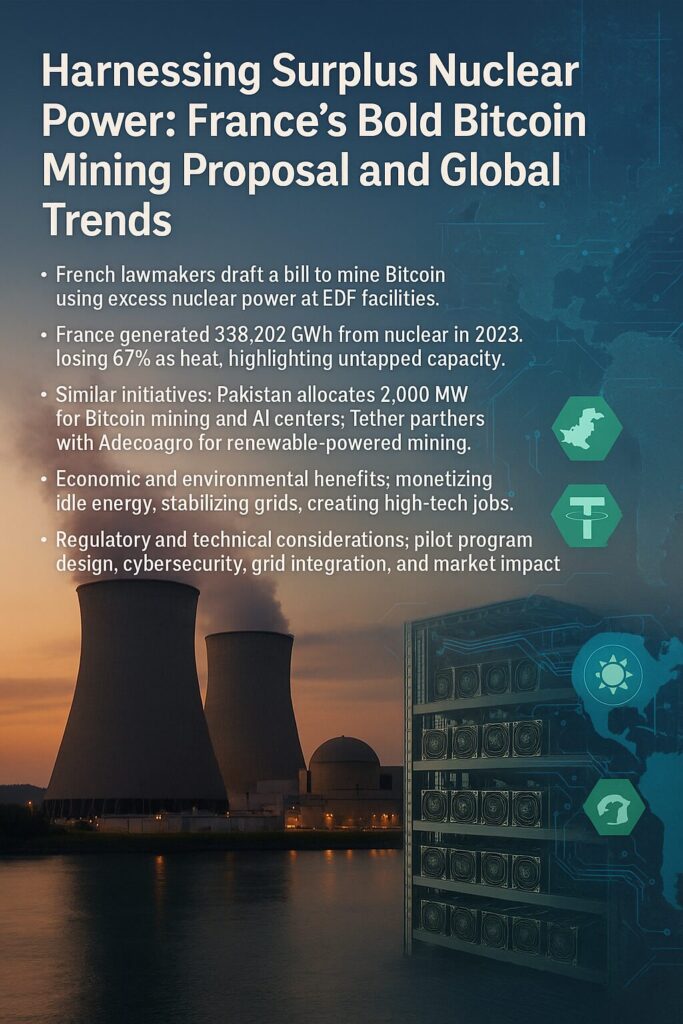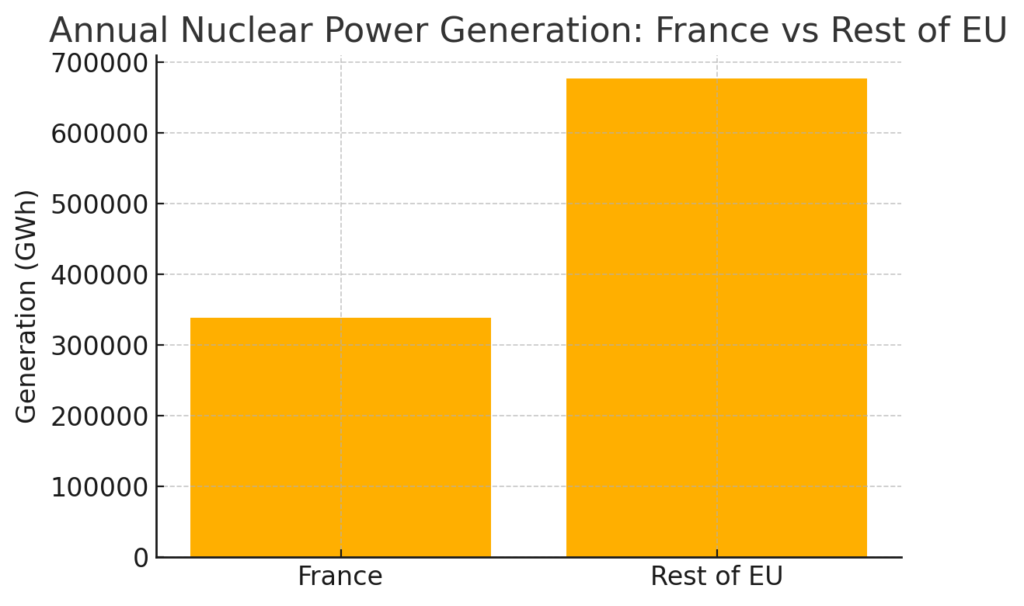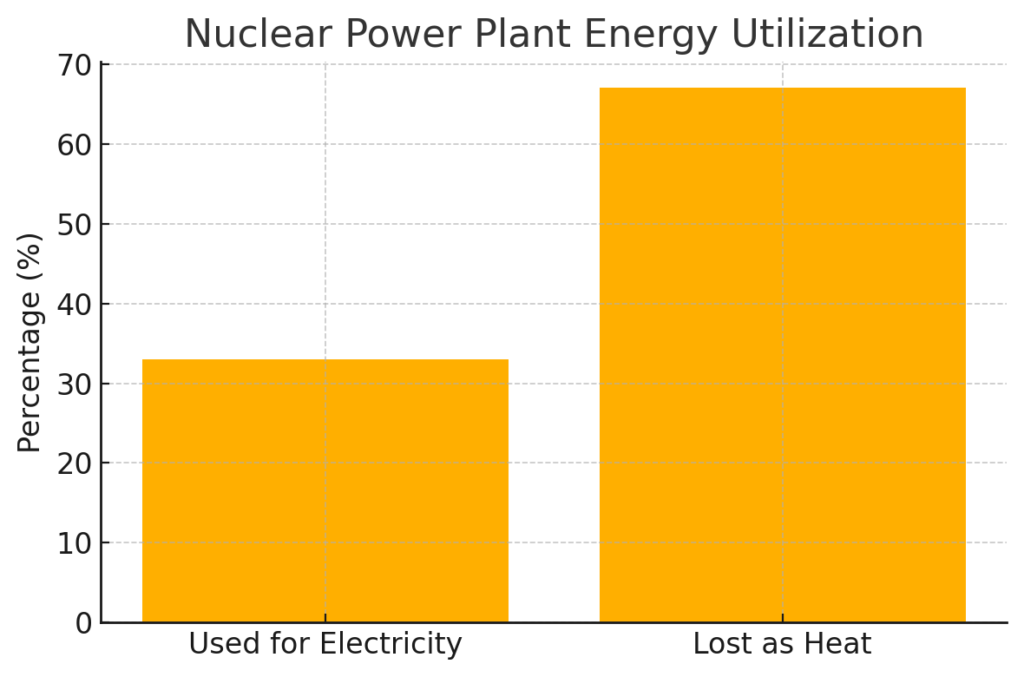
Main Points:
- French lawmakers draft a bill to mine Bitcoin using excess nuclear power at EDF facilities.
- France generated 338,202 GWh from nuclear in 2023, losing 67% as heat, highlighting untapped capacity.
- Similar initiatives: Pakistan allocates 2,000 MW for Bitcoin mining and AI centers; Tether partners with Adecoagro for renewable-powered mining.
- Economic and environmental benefits: monetizing idle energy, stabilizing grids, creating high-tech jobs.
- Regulatory and technical considerations: pilot program design, cybersecurity, grid integration, and market impact.
France’s Nuclear Power Surplus and Bitcoin Mining
A group of French lawmakers, led by members of the National Rally (RN) party, introduced a bill on July 11, 2025, to deploy Bitcoin mining hardware directly at state-controlled nuclear plants operated by Électricité de France (EDF). The draft law proposes a five-year pilot allowing surplus electricity—currently wasted as heat—to power high-performance computing rigs for cryptocurrency mining.
Aurélien Lopez-Liguori, one of the bill’s sponsors, called the plan “a safe and highly profitable solution,” noting that France’s nuclear fleet often runs below maximum capacity due to demand fluctuations. By redirecting idle energy to Bitcoin mining, the proposal aims to generate additional revenue streams for EDF and reduce grid strain during peak renewables output.
[Insert Figure 1 here: Annual Nuclear Power Generation—France vs. Rest of EU]

France led the European Union in nuclear generation in 2023 with 338,202 GWh, accounting for over half of the EU’s total nuclear output (≈676,404 GWh). Leveraging even a fraction of this surplus could power sizable cryptocurrency operations without drawing additional fossil-fuel or renewable capacity.
Energy Efficiency: Untapped Heat and Potential
Nuclear power plants convert only about 33% of fission energy into electricity; the remaining 67% is expelled as waste heat through cooling systems. This inefficiency represents a massive reservoir of untapped energy that could be monetized through compute-intensive tasks like Bitcoin mining.
[Insert Figure 2 here: Nuclear Power Plant Energy Utilization vs. Loss]

Pilot integration of mining operations could harness this otherwise wasted heat, transforming it into a productive asset. Similar “waste-to-compute” concepts have been trialed in other heavy-industry settings, underlining the versatility of data centers as energy sinks that stabilize power supply and demand.
Pakistan’s 2,000 MW Mining Push
In May 2025, Pakistan’s finance ministry, via the Pakistan Crypto Council (PCC), announced an allocation of 2,000 MW of surplus electricity to power Bitcoin mining and AI data centers. This move addresses chronic underutilization of generation assets, particularly expensive coal plants operating at 15% capacity, and seeks to attract foreign investment and create high-tech jobs.
As part of a multi-stage rollout, the PCC will coordinate with grid operators to redirect idle baseload power during off-peak hours. Experts anticipate sustainable GPU and ASIC deployments equivalent to several hundred megawatts, with possible expansion as demand and infrastructure adapt.
Tether’s Renewable-Energy Mining Initiative
Tether, issuer of the world’s leading stablecoin USDT (market cap ~$143 billion), recently acquired a 70% stake in Adecoagro—a South American agribusiness—and is exploring the use of sugarcane-mill renewable energy for Bitcoin mining in Brazil. Through this partnership, Tether aims to integrate USDT into commodity trading while monetizing Adecoagro’s 24/7 biomass power plants at roughly $600 million valuation.
Pilot programs will deploy containerized ASIC rigs near mills, consuming excess bio-energy that otherwise feeds into the local grid or is curtailed. This model offers a dual benefit: stabilizing the grid in agricultural regions and generating digital-asset revenue, potentially offsetting feedstock costs.
Economic and Environmental Impacts
By monetizing surplus clean energy, these initiatives create new revenue streams for utilities and industrial operators. They reduce reliance on peak-load fossil fuels and can lower overall carbon intensity per Bitcoin mined—especially when compared to coal or gas-powered setups. Moreover, grid-connected mining facilities can act as virtual batteries, ramping up compute loads to soak excess renewables and shedding load during scarcity.
Job creation is another major advantage: facility operators need technicians for hardware maintenance, network engineers, and cybersecurity specialists. In Pakistan, the PCC foresees hundreds of new positions, from ASIC farm managers to AI data-center staff.
Regulatory, Technical, and Market Considerations
Pilot programs must address licensing, safety, and environmental compliance. In France, the draft bill calls for an assessment of cryptocurrency mining’s contribution to the energy mix before wider adoption. Security is paramount: on-site mining hardware must adhere to nuclear-facility protocols and be isolated from critical control systems.
Market dynamics also play a role. Large-scale mining demand could depress wholesale power prices during off-peak periods, improving margins for utilities. However, utilities risk cannibalizing sales if mining loads become significant. Balanced contracts and dynamic pricing will be key.
Global Outlook and Future Prospects
Beyond France, Pakistan, and Tether’s Brazilian project, other jurisdictions are exploring similar models:
- United States: Small modular reactors in Idaho propose pilot compute clusters for data tasks.
- Norway: Hydropower operators examine containerized mining at remote sites.
- Iceland: Geothermal plants host decentralized mining facilities with near-zero carbon footprints.
These efforts highlight a growing trend: aligning energy-intensive digital operations with low-carbon, baseload generation assets to boost profitability and grid stability.
Conclusion
France’s proposal to mine Bitcoin with excess nuclear power epitomizes an emerging intersection of energy policy and blockchain economics. Coupled with Pakistan’s ambitious 2,000 MW plan and Tether’s renewable-energy ventures in Brazil, the movement to monetize idle generation assets is gaining global traction. These initiatives promise financial returns for utilities, environmental benefits through cleaner energy utilization, and new avenues for blockchain practitioners seeking innovative revenue sources. As pilot programs progress, stakeholders must navigate technical, regulatory, and market challenges to unlock the full potential of surplus-powered crypto mining.

